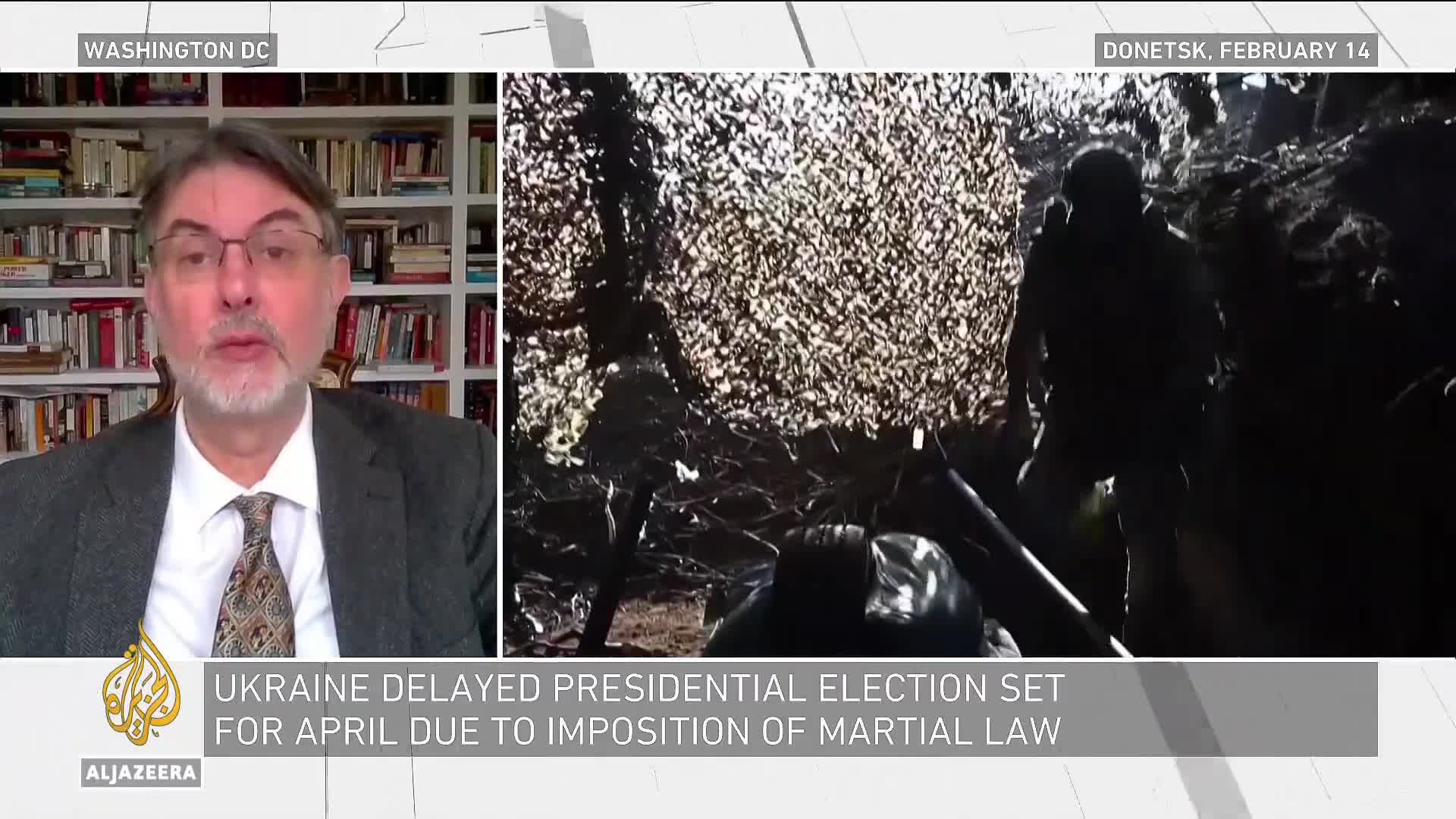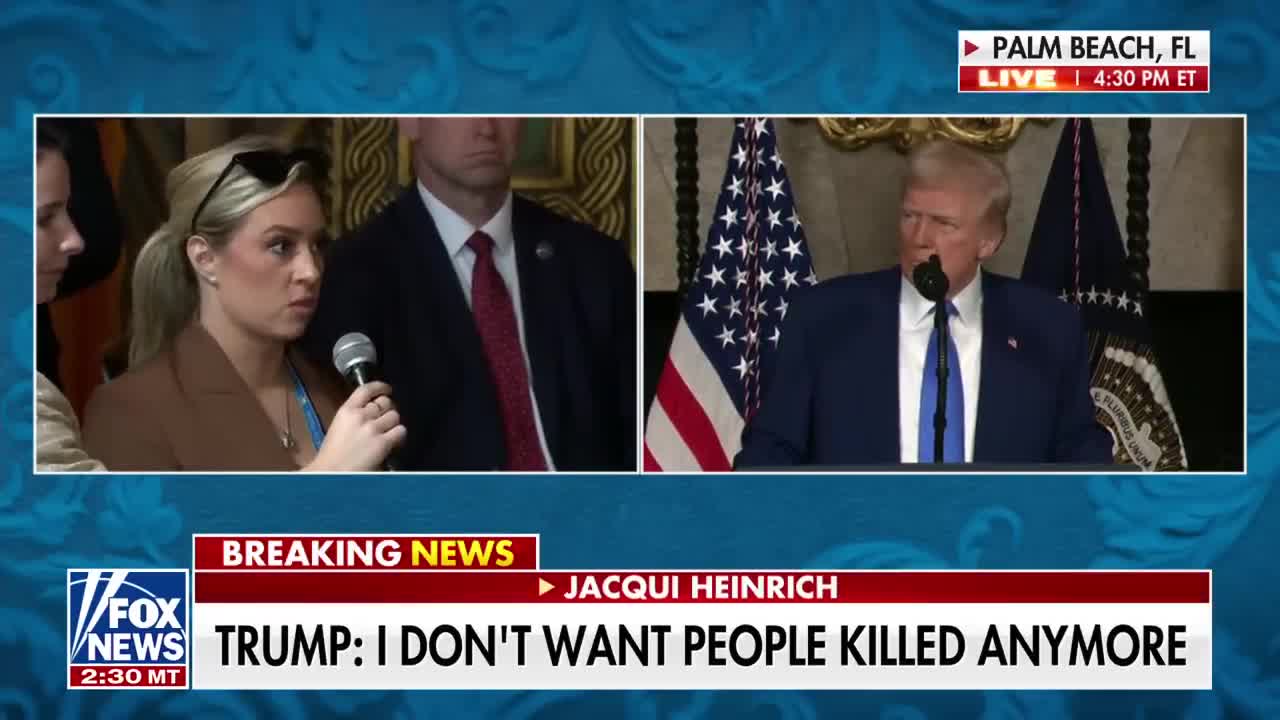International Relations
What is President Zelensky's current position in the Ukraine-Russia conflict negotiations?
President Zelensky now faces a significantly diminished negotiating position in the Ukraine-Russia conflict. As highlighted in the clip, Zelensky holds a "very, very weak hand in negotiations," which is particularly concerning given that recent talks in Saudi Arabia proceeded without Ukraine's participation. This precarious situation is further complicated by external influences, particularly from key figures like Donald Trump and Vladimir Putin, who are shaping the narrative around potential resolutions to the conflict. Ukraine's reduced agency in determining its own future raises serious concerns about its sovereignty as international dialogues continue to evolve without adequate Ukrainian representation.
Watch clip answer (00:06m)How are Western efforts to end the Ukraine war being affected by recent developments?
According to European Policy Analyst Mattea Nellis, there is an evident upending of the united Western efforts to bring about an end to the war in Ukraine. This disruption appears to be occurring through changes in sanctions policies and military support for Ukraine, suggesting a significant shift in the previously coordinated approach among Western allies. This fragmentation of Western unity could have profound implications for Ukraine's position in peace negotiations and potentially compromise the international coalition that has been supporting Ukraine's defense against Russian aggression.
Watch clip answer (00:08m)What do you think are the chances of the Europeans stepping up and there being any unity from the European side?
According to Anatol Lieven (Geopolitical Analyst), the Europeans can and will likely step up, though his complete assessment is cut short in the transcript. The context suggests European nations are being pressured to increase their support for Ukraine following high-level U.S.-Russia talks that excluded EU leadership. This comes at a critical juncture as European policies regarding military aid and economic support for Ukraine appear to be realigning. The question reflects concerns about European unity in response to Russia's apparent reintegration into international dialogues, particularly as it relates to Ukraine's sovereignty and future transatlantic relations.
Watch clip answer (00:09m)What is the economic component being discussed in US-Russia talks concerning Ukraine?
The economic component involves discussions about possibly lifting sanctions against Russia, with the US State Department referring to 'historic economic and investment opportunities' as part of bringing peace. This has sparked debate about the timing and appropriateness of such economic considerations, as some argue that since Russia was the aggressor in the conflict, the focus should be on Russia paying reparations rather than receiving economic incentives. The premature nature of these economic discussions raises questions about priorities in the peace negotiation process.
Watch clip answer (00:23m)What is the human toll of the ongoing Ukraine war according to President Trump?
According to Trump, both Russia and Ukraine are suffering catastrophic human losses, with thousands of soldiers being killed on a weekly basis. He compares the battlefield scenes to historic Gettysburg, describing fields covered with dead soldiers and body parts. Trump emphasizes that not only military personnel but also civilians have died in significant numbers, and foreign fighters, including Koreans, have been 'wiped out.' He believes the full extent of casualties will surprise people when eventually revealed, calling the conflict 'senseless' and claiming it would never have happened under his administration.
Watch clip answer (01:12m)Why does Trump believe the conflict in Ukraine could have been avoided?
According to Trump, the conflict in Ukraine could have been prevented through stronger leadership. He asserts that when he left office, there was 'no chance this could have happened,' attributing the war to 'incompetent leadership at many different levels' in the Biden administration. Trump emphasizes that during his four-year term, this situation never occurred and 'was never going to happen.' He characterizes Biden's handling of Ukraine as 'bad' and 'pathetic,' suggesting that more effective diplomatic engagement could have prevented the devastating consequences now seen in Ukraine's cities and population.
Watch clip answer (01:10m)




